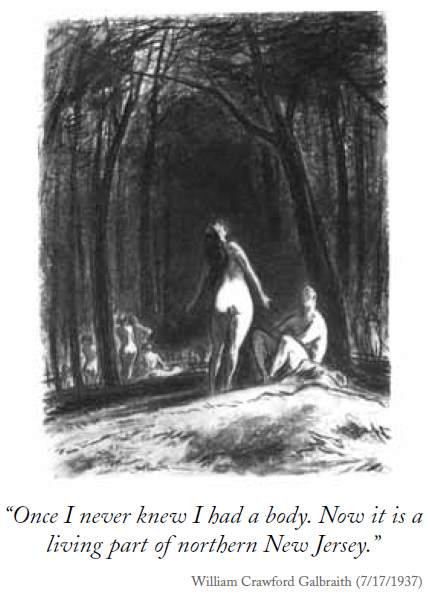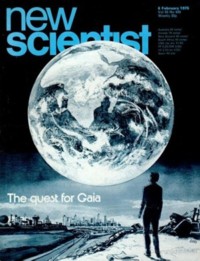Our recent trip to Central Australia involved a long walk around a rock and some even longer contemplative drives.
I found myself wondering if there is more or less 'life' out here than there is in the more obviously verdant countryside to the north south east or west. For example: might microbes be more abundant here? The flies are certainly doing well. Yet probably not.
This led me to recall James Lovelock's Gaia Hypothesis that gave we readers of New Scientist something to think about back in 1975, long before climate change was a matter of general public concern.
By the time I went to University in the 1960's, the results of the International Geophysical Year (1957-58) were well and truly in and many scientists were beginning to get a bit concerned about mankind's unprecedented impact on the Earth's environment.
Among the concerned scientists had been James Lovelock, the inventor of the 'electron capture detector gas chromatograph'. He was working at NASA on detecting potential indications of life on Mars and became interested in impact of life, in general, on a planetary environment.
He speculated that:
- If life exists only when conditions happen to be just right for its existence (the Goldilocks zone) then the existence of life obviously defines the material conditions needed for its survival.
- More controversially he speculated that on Earth life itself has, through its various impacts on the environment, worked to ensure that these material conditions stay within this zone. As he said: 'pinning the conditions to the table.'
By 'life on Earth' he meant all living things (cells and perhaps viruses) on the planet Earth acting collectively as a single organism, just as you and I are colonies of cells, with symbiotic bacteria and even with other animals along for the ride, all functioning as a single organism.
While he was thinking this through in 1958, his walking companion, from the village of Bowerchalke in Wiltshire in England was the author William Golding of: Lord of the Flies and later: To the Ends of the Earth fame. Golding suggested naming this hypothesis after Gaia, the personification of the Earth in Greek mythology, and mother of the Titans.

Cartoon from the New Yorker - 1937
Inevitably, Lovelock's Gaia became associated with Pantheism, that regards all Nature and the Universe as a single entity and equates it with The Deity. Pantheism was intellectualised as a philosophy in Europe by Spinoza in the 17th century and later in America by Thoreau; Emerson; et al.
As the cartoon above depicts, the Naturist movement came out of books like Thoreau's On Walden Pond and gained momentum after 'the horror of the trenches' during the Great War and, perhaps, the Spanish Flu? Read Lady Chatterley's Lover.
The nihilistic 'Lost Generation', that came of age during World War 2, and gave us 'Beat Culture' were now joined by the 'Baby Boomers' and the times they were a changein'. Time to: 'turn on, tune in, drop out'. Soon we had 'flower power'; the naked hippies on stage in Hair; and the Age of Aquarius.
Thus, Lovelock's speculative hypothesis gained mystical connotations, partly inherited from an ancient myth of the Earth's founding goddess, and quickly became a counter-culture meme.
Yet the counter-culture read a lot more into Gaia than a series of scientifically explicable biological mechanisms. They ascribed to the planet and by extension, to the heavens, all sorts of mystical attributes.
And so today, if you do a Google search on the word: 'Gaia', it produces around 130 million hits; and on the first half dozen pages only one or two of these are in the slightest bit supportable by the evidence. Latter-day hippies. Many seem to be in league with the 5G and anti-vaxxer conspiracy theorists.
In Lovelock's defence, he never proposed that the totality of the Earth's biota was 'knowing' or intelligent in a human sense. His Gaia is not a sentient super-being or an actual goddess - more like a termite nest or a bee hive acting as a single organism.
He's not a nut. He remains a respected scientist and is a Fellow of the Royal Society (FRS) with many publications, discoveries and inventions under his belt. He's critical of 'green religion' and while brought up a Quaker is non-religious, if not actively anti-religious, like Dawkins.
In forming the Gaia Hypothesis, he was simply suggesting that because life is able to impact things like: the composition of the atmosphere; the salinity of the oceans; and the absorptivity or reflectivity of the biosphere; that, through survival of the fittest, competing cellular life-forms might work against changes adverse to life, in ways that work to keep the planet within the Goldilocks zone.
When driving in Central Australia I did little more than steer the car for hours on end, the cruise control having been set at 110 kph so, it occurred to me, that this was an example of a Goldilocks zone: not too fast and not too slow.
Thus, as we zoomed along under cruise control, the throttle automatically opened when going up rises and closed going downhill, keeping the car's speed more or less steady at the legal limit. Similarly, the thermostat regulated the air conditioning. Not too hot not too cold.
The ongoing scientific debate is much the same regarding the Gaia Hypothesis. Do life's self-supporting feedback mechanisms actually function to keep conditions within certain bounds and if so, how do they work?
As we see out here in Central Australia, conditions have changed dramatically over the past 500 million years.
In that time life evolved from single cells and plants began to grow and free oxygen. So, hasn't life simply responded and adapted to the prevailing conditions - albeit that many of the changes were wrought by life itself? Wouldn't life respond in a similar manner to almost any change, short of the total destruction of the planet? A meteor impact 65 million years ago for example.
Among the critics of the Gaia Hypothesis has been Richard Dawkins, a fellow FRS, whose book: The Selfish Gene took popular science by storm in 1976. The book is one of the hundred books everyone should read. It proposes that it is genes, the smallest units of selection, that nature pitches against each other in the competition for survival. Thus, evolution is a process of the survival of the fittest genes and they have been in this struggle since life began.
If this is too brief an explanation - read the book - or read here...
In passing, Dawkins also suggests that ideas have similar evolutionary development and it was he who coined the word 'meme' to describe this process.
The underlying landscape out here predates life as we know it. And when it was formed, the planet had a poisonous atmosphere in which oxygen breathers could not survive. Humans are a recent evolutionary Gaian innovation in this long history and are incidental to the on-going viability of life on Earth. As Shakespeare noted, as individuals we are here for but a brief candle. He and his players are long gone to dust. The same will apply to our species.
In Dawkins' terms: the cells, that harbour life's successful genes, are through their success, exploiting the prevailing conditions on Earth in which those cells are best able to compete and replicate. As they impacted the environment, doing things like adding oxygen to the atmosphere and capturing carbon, so in turn new opportunities opened for gene evolution manufacturing new cells to exploit the changes; and so on.
Thus musing, I returned to an old idea. Perhaps Gaia (the entirety of the biota) is optimised to fully exploit the prevailing conditions at any one time, so that the total mass of living entities that the planet can support has been maximised. Maybe, the total biological cake: Lovelock's Gaia, can't get any bigger, given in the present conditions?
This would neatly explain the present speed of other-species extinctions. As the humans have expanded our cellular totality, by means of our newfound ability to compete, other species have had to reduce theirs.
Thus, trying to preserve other species, while continuing to expand our own numbers, might be futile. Saving a cute, fuzzy or majestic species could be to hasten the loss of another one, perhaps less obvious. A sort of reverse Whac-A-Mole?
If this is so, then to do any good for other species we need to reduce our human numbers.
So, should I crash the car and give the last remaining thylacine, lurking in the Tasmanian wilderness, a chance?
No way! My life is far too fascinating for that. I imagine yours is too.
So, where's a wombat I can whack instead?
Sorry thylacine, I found none of those wandering the roads in the Red Centre. It's far too dry. You'll have to die.
When I first published this article, back in July 2012, a friend pointed out that animals make up a small fraction of life on Earth. Indeed, in terms of carbon content, bacteria outweigh animals some 35 times. Even fungi are six times our mass. And, of the animals, our human collective mass is but a tiny fraction (0.03%).
Plants make up the vast majority of of life on the planet: nearly five times all other life forms put together (source: see the chart)
Thus, if the Gaia Hypothesis is true, then it's plants that will adjust things for their benefit - not for the benefit of non-symbiotic animals and certainly not to benefit humans.
So here's another speculation.
As is obvious to everyone, humans are presently overrunning the planet. We've gone from 1.6 billion at the start of the 20th century to 7.9 billion in 2021 and heading towards 10 billion.
We are now noticing that man-made pollution and our general destruction of the long-term environment is resulting in accelerated planetary warming.
That's not good news for us warm blooded animals. Because, as Central Australia teaches us, when our upper temperature threshold is exceeded for too long we die. And climate extremes are on the increase - not just in Central Australia.
On the other hand, higher mean temperatures increase ocean evaporation and thus humidity; and photosynthetic plants thrive on increased carbon dioxide and moisture.
So perhaps Lovelock was right all along. If we push the temperature too high we'll cut back on the tiny fraction of life that is terrestrial: mammals; birds; and other warm blooded creatures. Yet life will go on in the oceans and, on land, the plants; bacteria; and fungi will again inherit the Earth.
By cutting back our excessive numbers Gaia will have self-adjusted, perhaps for another billion or so years?
Feel free to use the 'Add comment' link below

